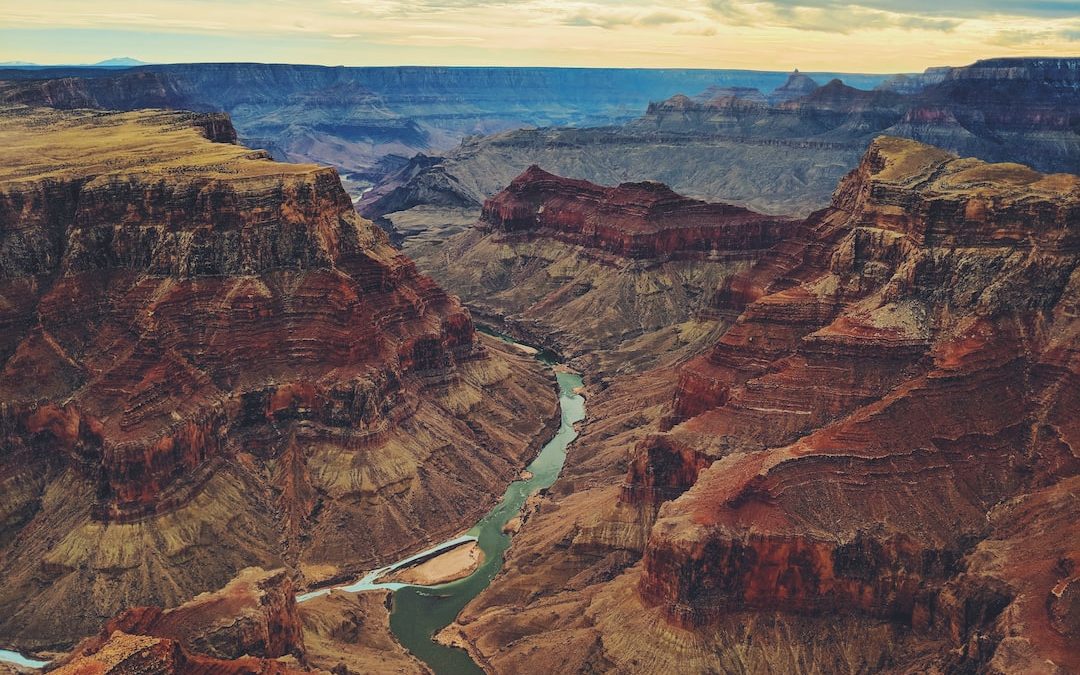Eleven tribes call the Grand Canyon home: Havasupai Tribe, Hopi Tribe, Hualapai Tribe, Kaibab Band of Paiute Indians, Las Vegas Band of Paiute Indians, Moapa Band of Paiute Indians, Navajo Nation, Paiute Indian Tribe of Utah, San Juan Southern Paiute Tribe, Pueblo of Zuni, and the Yavapai Apache Nation. Each tribe has their own version of the emergence of their people from the point where the Little Colorado and the Colorado rivers meet at what is known as the Confluence.
Recently, the Grand Canyon Tribal Coalition, called upon Washington to create a 1.1-million-acre National Monument to protect this sacred area from threats like uranium mining and over-development. (This proposal remains under consideration by the U.S. government.) The Havasupai Tribe, in particular, who have lived in and around the Grand Canyon since time immemorial, were last evicted from the area in 1928. Finally, the name of the campground and rest area along the Bright Angel Trail has been renamed to be Havasupai Gardens.
So, why do we care? Well, history repeats and we are now faced with many of the same challenges that drove ancient civilizations below ground, only to emerge in stages after the great floods receded. There is much speculation about pre-historical circumstances, but there is no denying the legendary similarities existing in most indigenous cultures—cultures which would not have had contact at the time of the catastrophic earth changes. It is not important for us to believe the mythology—it is important to study how people faced with insurmountable obstacles can begin again and do it peacefully.
The Hopi emergence story describes how the Hopi people lived in the underworld for many years, where they were taught by the Kachinas about the ways of the world and the importance of living in harmony with nature. However, the time came when the Kachinas instructed the Hopi people to leave the underworld and emerge into the physical world.
The Hopi people followed the Kachinas’ guidance, and after a long and treacherous journey, they emerged from the depths of the Grand Canyon. After the emergence, the Hopi people continued to be guided by the Kachinas, who taught them how to survive in their new environment. The Kachinas instructed the Hopi people in agriculture, hunting, and spiritual practices, which helped them to establish a thriving community in the mesas and valleys of northeastern Arizona.
One of the most important crops grown by the Hopi is corn, which is considered a sacred food. The Hopi have developed over 24 different varieties of corn, each with unique properties and flavors. The Hopi use corn in a variety of ways, including for food, medicine, and as a part of their spiritual practices. In addition, these unique strains of corn can withstand the harshest of conditions on a planet that is becoming hotter and drier. This certainly is useful today.
Migration and societal connections are once again paramount. DNA samples from several tribes show striking similarities with Eastern Asian populations suggesting that migratory routes included crossing land and/or sea from Asia. The Zuni language, for instance, is considered by linguists as having no established relationship with other languages. However, one anthropologist has linked the language to a Japanese archipelago. This could be a result of Japanese Buddhist missionaries traveling to Mexico, then north during the 12th century CE. Regardless, human migratory patterns are more extensive than originally thought—we are all inter-related at some point. So, when we turn our backs on other cultures; we are turning our backs on ourselves—we are all in this together.
Next, bring on G.E. Kincaid, an American adventurer and explorer who, in the early 20th century, claimed to have made an incredible discovery within the depths of the Grand Canyon. His account of this remarkable find has since been the subject of intense debate and speculation, with many questions remaining unanswered to this day.
Kincaid was born in 1868 in Washington, D.C., and spent much of his youth exploring the wilderness around his home. He developed a deep fascination with ancient civilizations and lost cities, and this passion led him on numerous expeditions to remote regions across the globe. However, it was his journey to the Grand Canyon in 1909 that would prove to be his most controversial.
According to Kincaid, he was traveling down the Colorado River on a wooden raft when he noticed an unusual cave entrance on the canyon wall. Intrigued, he decided to investigate and found himself inside a vast underground chamber. As he explored the cavern, he was amazed to discover a series of intricate tunnels and passageways leading deep into the earth.
Further exploration revealed that the tunnels were home to a thriving civilization, complete with temples, homes, and even an enormous amphitheater. The walls of the chambers were adorned with intricate carvings and murals, depicting scenes of daily life and religious rituals. Kincaid also claimed to have found artifacts and relics that suggested the inhabitants of the underground city were a highly advanced and sophisticated culture.
Kincaid returned to the surface with a trove of photographs and sketches, as well as a detailed journal documenting his discovery. However, his account was met with skepticism and disbelief from many quarters. Some argued that the photographs were doctored or taken from other sources, while others suggested that Kincaid had simply fabricated the entire story as a publicity stunt.
Despite the controversy, Kincaid continued to promote his story and even offered to lead expeditions back to the underground city. However, he was never able to provide concrete evidence to support his claims, and the mystery of the Grand Canyon cave remains unsolved to this day.
So, as we look to our future, the question is: Will we fall victim once again, to a planetary collapse from war, famine, economic collapse, political upheaval, and environmental changes, only to scramble underground to wait until we can re-emerge? Or have we learned enough to circumvent most catastrophes, band together, support each other and thrive? Let’s hope this is so.
![]()

